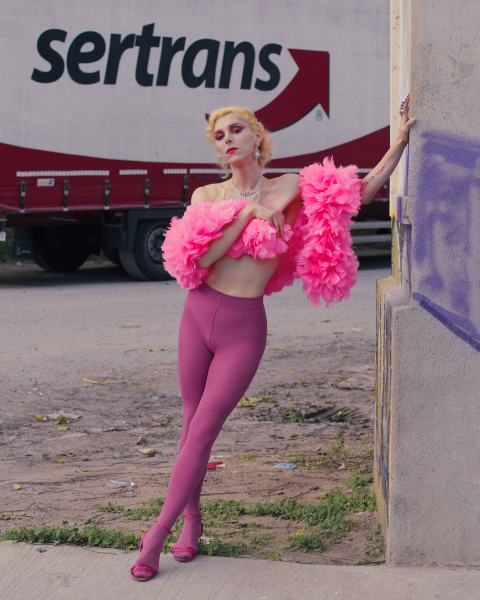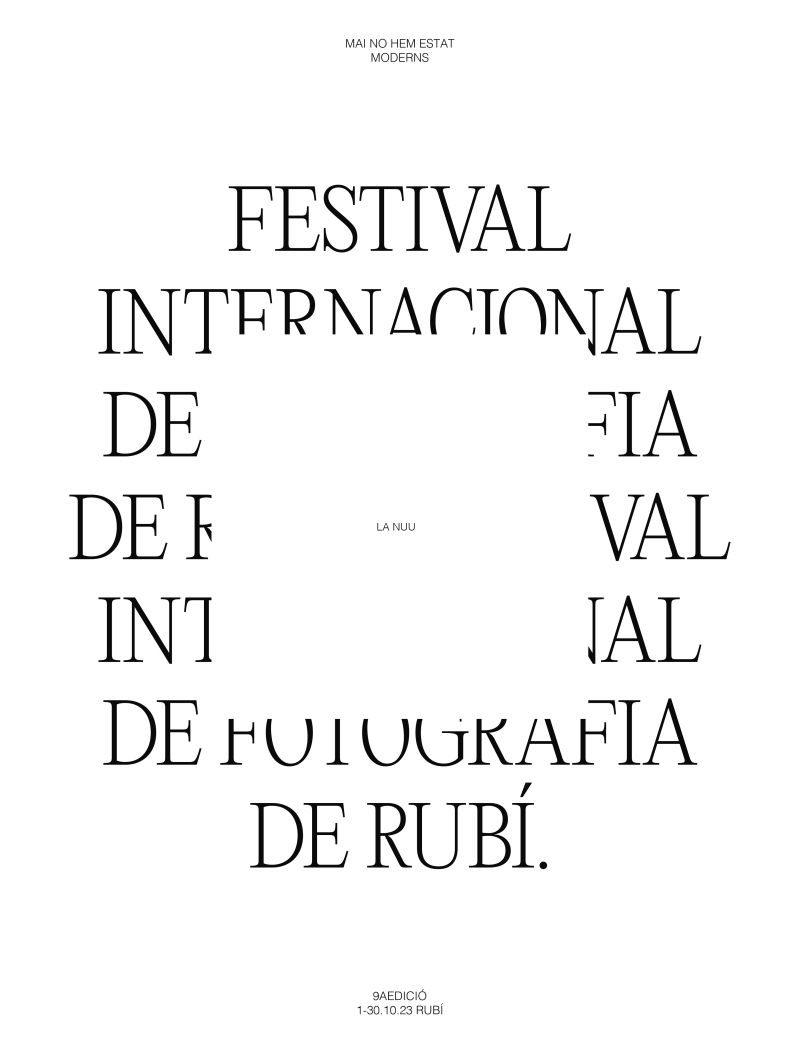Artists
Annemarie Swartzenbach
(Zurich, Switzerland, 1908 - Sils im Engadin/Segl, Switzerland, 1942)
A Doctor of History, archaeologist, journalist, photographer and novelist, Annemarie Schwarzenbach is known above all for her work as a travel writer. She was a friend of Klaus and Erika Mann (the children of Thomas Mann) and experienced the tumultuous artistic atmosphere of Berlin between the wars. The story of her life is an adventure novel in itself. In 1935 she married the French diplomat Claude Clarac in Iran. Her journeys, which inspired her work, took her to the United States, Spain, Russia, Afghanistan and the Belgian Congo. Throughout her life she was addicted to morphine and was intermittently under psychiatric treatment, marked by suicide attempts.
Oddly enough, despite her turbulent life, she died at the age of 34 in the same way as the singer Nico on the island of Ibiza: in a bicycle accident.
Around mid-1938, Annemarie met Ella Maillart, the great Swedish travel writer, whose Forbidden Journey she had read. The new friends planned to travel through Afghanistan in Annemarie's Ford, packed with photographic material. The travellers aroused curiosity and shocked surprise in Afghanistan. Nevertheless, no one refused them board and lodging. After ten weeks they arrived in Kabul, where they learned about the German-Soviet Pact and the outbreak of the Second World War. Maillart left for India, while Annemarie decided to cross Afghan Turkestan. Her travels with Maillart are narrated in the gripping book All The Roads Are Open.
Her photography is a great unknown masterwork. Like her writing, her square black and white images form part of her autobiography, an impersonal diary, a travel narrative full of fictional elements. A paeon to the East invented by Westerners.

Antonio Luque
(Córdoba, Spain, 1962)
Antonio Luque is a multidisciplinary artist who uses both two-dimensional images and video and artistic and sound installations in his work.
At times we forget that technology is a human creation like society or politics.
‘426 Anarchists’ is a meditation on the multiple image generated by archives. The three series that form the work are developed in different ways. In the first, no one face prevails over the others, creating a new, familiar face as a result. In the second series, an image is developed through the superimposition of the individuals to produce an unreal image. Finally, in the third, the view is blurred in a return to the parameters of the multiple image.
After the events that took place in the Paris commune in 1871, and the rise of the anarchist movement throughout Europe, the French government organised searches and arrests of anarchists with the aim of repressing the movement.
Warrants were issued for the arrest of 426 people on the charge of unlawful association. Twenty-nine of the accused managed to escape. From August 6 to October 31, 1894, a show trial was held for 30 of those arrested (19 anarchist theorists and 11 common criminals) to demonstrate the connivance between anarchism and the world of crime.
But, above all, the trial served to create an unfavourable opinion of the anarchist movement among the population and to restrict freedom of the press. In what was one of the first works of modern police photography, Alphonse Bertillon took photographs of the 397 detainees. It was one of the first works of modern police photography.
The faces that form ‘426 Anarchists’ do not belong to any one particular detainee, and belong to all of them. They form synthetic faces that reflect a society which, despite the passing of time and technological development, has not really changed very much.

Bebe Blanco Agterberg
(Amsterdam, Netherlands, 1995)
History is an infinite invention. All societies invent their own past. History is not based on facts but on interpretation of the facts. Historical science is just another literary genre, a hybrid created from objectivity, subjectivity and discourse.
‘A mal tiempo buena cara’ [“Try to put a brave face on it”] is a photographic work that asks how it is possible to live in a State built on silence. The project is a meditation on the period of transition in Spain that followed the death of the dictator Francisco Franco in 1975. The Spanish people had to decide how to move from dictatorship to democracy without violence, and this made a clean break impossible. Many crimes committed under the dictatorship went unpunished and the State apparatus was recycled with the same leading figures. Some of the practices of the dictatorial regime continued and still form part of the foundations on which Spain is built today.
The project takes a wide-ranging look at all these issues, reconstructing the collective memory in order to confront atrocity. The work seeks to combine the artist’s photographs with more documentary images to look at how oblivion became a political tool.
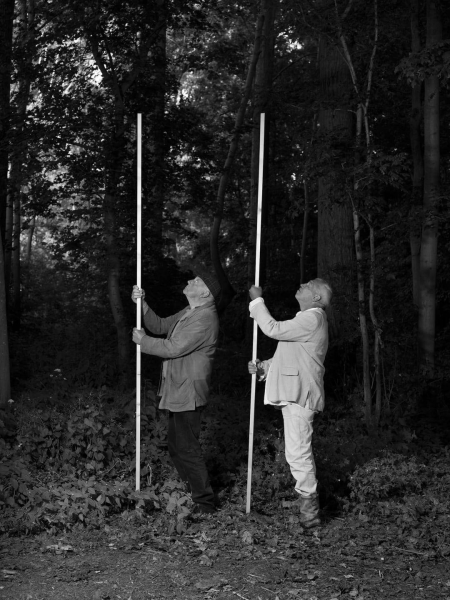
Calin Kruse
(Leipzig, Germany, 1981)
The human being is an animal that does not recognise itself as such. It looks in the mirror and does not see itself. It always believes itself to be something more: a being with a spirit as well as its materiality. Perhaps that is why the philosopher Markus Gabriel says that we never fully fit into nature. We contrast our artificial habitat, the city (from civis, the word which also gives us terms like civilisation and civility) with the natural habitat, the wild world.
Our distancing ourselves from nature is the cause of today's environmental problems. The trace left by humans on Earth was practically insignificant until the arrival of industrial societies, when we became a geological force that is transforming our planet. A new geological era that we are beginning to call the Anthropocene. However, we do not realise any of this, because we live in isolation from nature and do not feel part of it.
In his work ‘Natural encounters’, the photographer, designer, editor and curator Calin Kruse presents images of wild animals alternating with dreamlike or nightmarish landscapes with details of faces and bodies in the foreground to attract the spectator to observe nature directly.
Although all species can – at least in theory – adapt to or benefit from human settlements, the approach of wild animals to human populations cause mistrust and fear. Generally speaking, the only “natural encounters” between humans and animals occur when the latter are in captivity or are run over.
This walk on the wild side takes the shape of a rollercoaster ride through moods and feelings of anticipation, anxiety, fear, surprise, delight and liberation.
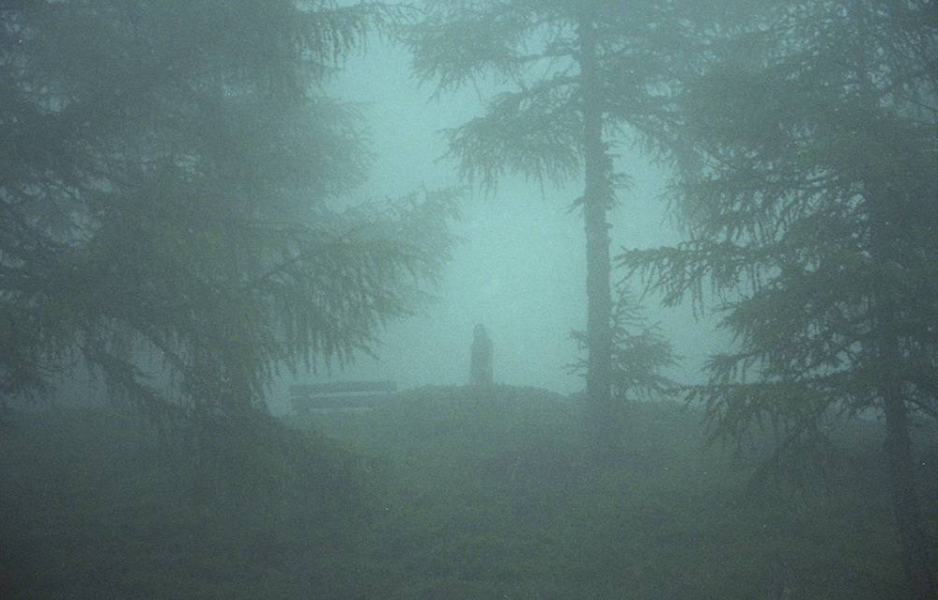
Federico Clavarino
(Turin, Italy,1984)
By detecting magnetic fields, eels migrate to the Sargasso Sea to reproduce. They leave their rivers behind and swim out into the ocean to meet what scientists call “their life’s goal”, after which they die. Their offspring then swim back to the rivers, thousands of miles away. Each eel travels at its own pace, arriving before, during or after spring. Their last journey is a lonely one, whereas new-borns make their way back to the rivers along with others, and share a life together there.
Like the visible bits of the viscous animals in an actual eel soup, the objects presented in the work ‘Eel soup’ are fragments of an ephemeral reality. Carefully observing spaces and body parts as they twist, press, open, bend and touch, Federico Clavarino and Tami Izko use photography and clay as the media to reinterpret a series of meaningful connections. Ultimately, the resulting series tells a story of coexistence, one that is largely built around the lingering images left behind by otherwise vanishing intersections.
The book version of this work, which has been exhibited on multiple occasions, weaves together several of its ramifications: views of the installation, images of the studio the artists shared in Milan, photographs of the sculptures, and sculptures made out of photographs. The book also documents its own coming into existence by featuring images of the wall that was used to work on its sequencing, as well as interviews the artists conducted with one another. The book itself, like a bowl of eel soup, challenges our faculty of telling things apart from each other, be they people, artworks or other forms of life.

Hiro Tanaka
(Tokyo, Japan, 1955)
The history of photography is the history of the white man travelling around the world with a camera hanging from his neck. The West has always described the rest. Bruno Latour champions a symmetrical anthropology that studies our society as classical anthropologists studied the so-called primitive societies. The others, the non-Westerners, should be able to write and explain the world.
Hiro Tanaka is a Japanese photographer who has been living in the United States for some years now. The photographs in his work ‘Chicharron’ are a collection of portraits, landscapes and still lifes that capture everyday life and his travels around the United States, Europe, South America and Asia. Highly humorous, they contain objects and fragments that combine the ordinary with unusual elements in a surreal atmosphere.
Tanaka’s images are rich in glossy textures and highly saturated colours. His is a style that produces a sensation of absurdity and even strangeness. The everyday is examined under the light of a pitiless flash, frontal lighting like a punch in the face.
His vision is characterised by surprising, incongruous juxtapositions that seek to create a constant sensation of bewilderment and displacement.
These photos focus on the banal, such as food – pork rind (chicharron), for instance –along with what is extraordinary in order to describe the sense of disorientation that a trip abroad can cause. Photographs full of chaos that suggest apparently random connections. Images separated in time and space that interpret the world through the photographer's subjective gaze.
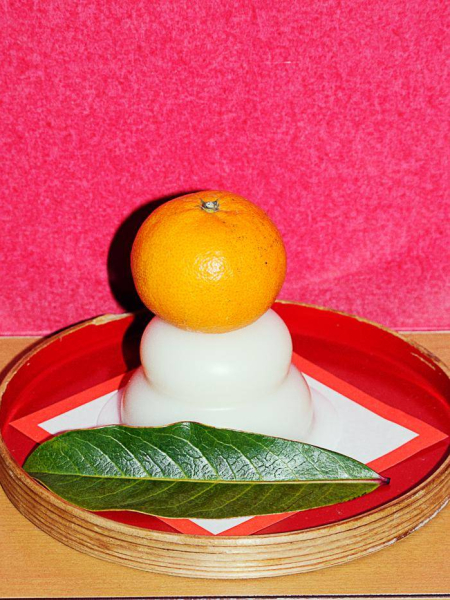
Gianpaolo Arena
(Treviso, Italy, 1975)
Gianpaolo Arena’s photobook ‘A Folktale From Vietnam: Speeding Motorcycles and Roasted Lemongrass’ is the result of the numerous visits to Vietnam over a period of eight years. Arena, a photographer, researcher and writer interested in anthropized spaces and their environmental and social relations, arranges his photographic fragments of the country – architectural observations, portraits, snapshots and photographic records of encounters – into a multi-faceted, poetic visual study. He is less interested in making a documentary dissection of Vietnam and its culture than in discovering and representing the country.
His images seek to capture the voices, music and sounds of the landscape and life in Vietnam. The cacophony produced by the low hum of wheels on the roads, the irregular but incessant sputtering of mopeds, work on construction sites and such individual sources of noise as car horns, radio speakers, the voices of inhabitants and the singing of birds in cages hung from buildings.
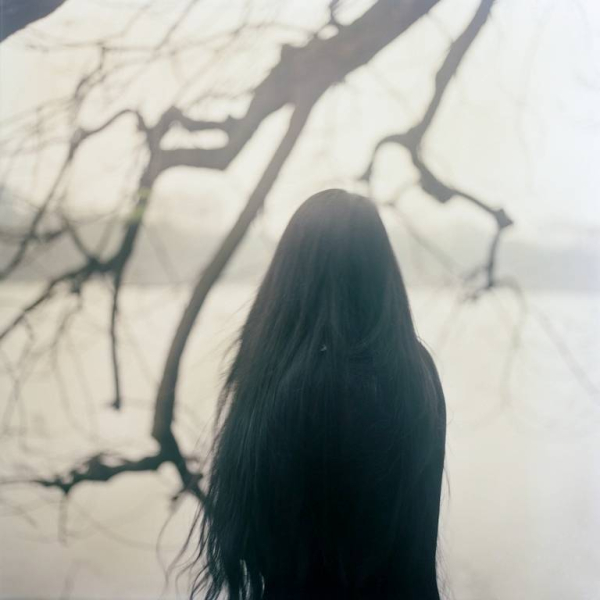
Lara Gasparotto
(Liège, Belgium, 1989)
The artist describes her project ‘Solstices’ as follows: “Looking through the soil of my memories, I confuse my feelings with seasons. What I remember is what I make of it”.
The human being is the measure of all things, as the ancients used to say. It seems completely impossible not to sense nature through the filter of our own self. The solstices mark the changes of the seasons; the days and nights of nature seem to be repeated infinitely within the circle of time. The stars revolve and everything revolves with them.
Time does not exist. It is a human invention. Linear time. Chronological time, born of the calendar and later of the clock. Human time that invents the passing of time. A hybridisation that threads together this network of agents made up of quasi-objects.
Lara Gasparotto creates an intimate universe by capturing moments of sweetness and melancholy. Memories converted into dreams, the narrative of her images is shaped by the atmosphere generated by the relationship between light and silence. We read her images as we remember past seasons: the place and the time do not matter; moments become like tender memories of what we have not lived.
The figure, time and again, of the woman: young, sensual, at times on the verge of fainting away. Adolescent women, immature yet full of sensuality, vague images among fragments of the natural world. The flow of water like the amniotic liquid in which her characters swim and dive within the maternal womb of nature. The symbolic, holy gesture of baptism as an erotic act of giving oneself to life.
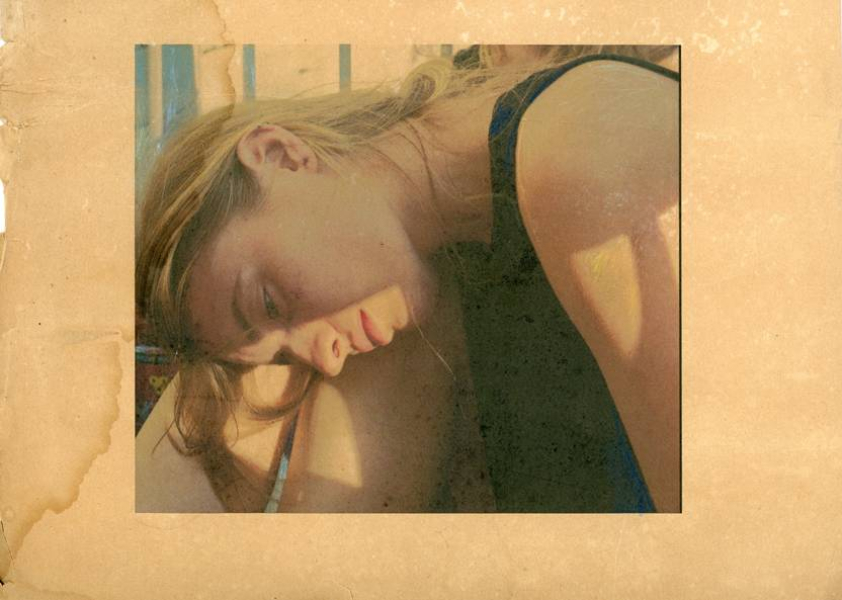
M'hammed Kilito
(Casablanca, Morocco, 1981)
Located in arid and semi-arid regions and considered an ecological bulwark against desertification and an important refuge for biodiversity, oases are unique ecosystems based on the correct balance of three elements: abundant water, soil quality and the presence of date palms. With their parasol-shaped foliage, date palms create a humid microclimate sheltered from the wind and favourable to the growth of vegetation.
‘Before it's gone' is an ongoing project that documents life in oases, focussing particularly on the complex, multidimensional problems of oasis degradation in Morocco and its impact on the country’s inhabitants.
The main aim of the project is to draw attention to this situation by alerting public opinion, policy makers and concerned organisations. ‘Before it's gone' is also a call to protect the ancestral intangible heritage of nomadic culture in Morocco, and to conserve the oasis ecosystem.

Manal Abu-Shaheen
(Beirut, Lebanon, 1982)
This work, whose title is the name of the city of Beirut, aims to show how the forms of communication of today's globalisation export idealised images of one culture to the realities of another. The West as the great coloniser imposing its lifestyle everywhere, its ideal of prosperity and society. The Tradition-Modernity dichotomy replicates the East-West dichotomy. Progress can only follow the traces of the capitalist world and the liberal system.
Motivated by the lack of a visual history of the landscape in Lebanon, the author constructs her own photographic archive of the urban environment: a city dominated by billboards. Advertising images of an opulent West fill the streets of a Middle Eastern city. Luxury, glamour and happiness. In a sense, the advertisements are the bait for the unlimited consumption of capitalist growth, but on the other hand, they aim to sell an entirely mythologised Western ideal that is incongruous in a post-war city.
Advertisements and neoliberal capitalism represent the latest form of colonialism. What is new and fascinating about this system is that it uses images as its most powerful tool. The city is now occupied by images of Western people and products. The fact that he uses black and white in his photographs seems to put the fictional world of advertising and the harsh reality of the city of Beirut on the same level.

Paula Anta
(Madrid, Spain, 1977)
As the writer Carlos G. Munté would say, “The human being is artificial by nature”. Paula Anta is a Spanish artist and photographer whose work focuses on the relationship between nature and artificiality and with the structures created by human beings.
Anta created her Khamekaye series in the Grand-Côte, a 150-kilometre stretch of the Senegalese coastline from north of Dakar to the mouth of the River Senegal. In this great area of beaches and dunes we find, from time to time, structures formed by branches, plastic, fishing nets and other objects. Rising up amid this huge expanse of sea, sand and vegetation, at first glance they seem to be shapeless, chaotic objects, bundles of branches and plastic that appear to have been expelled by the sea. However, these Khamekaye are in fact signs, great landmarks placed along the shore to mark places where there are villages farther inland. They serve a very specific purpose, and have a practical, domestic raison d’être. They are not located in random positions. They make the locations of villages visible, both from the sea (there are busy fishing zones all along this coast) and from the shore. Khamekaye is a word meaning, precisely, landmark in Wolof, one of the most widely spoken languages in Senegal, and it is used exclusively to refer to these beach signals.
However, the real discovery is the aesthetic, formal intent that lies behind these structures made of primitive found materials. The structures, then, are no longer abstract, but become sculptures, establishing a relationship with the place (the landscape) and with local culture (history, society, the economy).

Marguerite Bornhauser
(Paris, France,1989)
The phenomenon of colour is far from being explained with certainty. Is it a purely physical sensation pertaining to objects or is it merely a subjective psychological reaction? Is it found in external reality or in the interior of our brain?
It took a long time for the use of colour in photography to become accepted by the art world. It was considered that black and white was more suitable for a visual representation of the real world and that the use of colour only added deception and frivolity. This disdain for colour in the history of photography did not change until the appearance of work by such practitioners as William Eggleston and Wolfgang Tillmans.
Marguerite Bornhauser's work goes much further and colour is both the content and form of her style, becoming a way of perceiving and representing the world.
Her project ‘When Black is Burned’ comprises a series of poetic images of intoxicating beauty that approach the realm of the abstract. Enlarged fragments, outlines of dark black shadows, textures, reflections, isolated plant forms and decontextualised fragments. A dreamlike world which blues the difference between reality and fiction.
To achieve this colour palette, Bornhauser uses classic Ektar 100 film to obtain dense, saturated colour. Her mastery of colour and her playful use of the contrast between shadow and light underlie the singularity of this visual language full of intense, organic chromaticism. The material from which her dreams are made.

Mercis Rossetti
(Barcelona, Spain, 1989)
The loving feeling is a mixture of instinct and cultural learning. ‘Amor de llangardaix’ [“Lizard Love”] is an ode to love and heartbreak, to bodies that mix, their limits blurring. To skin, sweat, exchange. To all that which is pleasure and which is transformed into pain only to begin again. To unconventional love, to lovers, to ex-lovers and to all those parts of the body that do not exist without another.
There are parts of the body that are impossible to classify. They exist on the threshold between two other anatomies that do have their own name. There is no way of naming them other than by describing where they are located. They are spaces of union and coexistence. They are the physical boundary between certain clearly defined elements. The agglutinant that enables a body to exist as a complete unit. They are “lichen anatomies”.
In general they do not exist consciously until another activates them through touch. They live inactive lives. The fold between the fingers and the toes, the empty spaces between the ribs, the joint between the neck and the back of the ear, the space between the clavicles just above the sternum, the skin under short nails. All these fragments have something of a phantom quality, of absence due to lack of attention, and live in hibernation waiting for someone else to activate them.
This series of analog photographs in colour and black and white illustrates the need for the skin to be caressed and for bodies to touch, each image forming a link in the infinite chain of love and heartbreak.

Teo Vázquez
(Cadiz, España, 1975)
La Nuu in the Neighbourhoods. The faces of the city. Intervention by artist Teo Vázquez in the streets of the Les Torres neighbourhood.
The faces of the city is a contextual art project of situation, intervention and citizen participation that will take place during this year's festival.
La Nuu in the neighbourhoods starts this year but with the intention of being reproduced in different neighbourhoods of the city of Rubí. One for each edition. This year this experience begins in the neighbourhood of Les Torres.
The artistic action will be carried out by the photographer and urban artist Teo Vázquez.
One of the objectives of this project is the vindication of the periphery as a centre of cultural production and consumption. The aim is to develop on the periphery of the periphery in order to decentralise the cultural dynamics of the city of Rubí.
The neighbourhood of Las Torres de Rubí, located in the southern part of the town centre, is currently one of the most densely populated neighbourhoods in the city. In recent years, nine newcomers, mainly from Morocco and Latin America, have become our neighbours.
The name Les Torres comes from a group of residential houses (‘towers’) that the Massana family built in the 1920s, but it was not until 1968 that work began on the construction of the large blocks of flats that now make up the Les Torres complex itself.

Isaac Flores
(Barcelona, Spain, 1994)
‘Valid Identities’ is the title of a show of Isaac Flores’ photographic work focusing on the queer scene in Barcelona. These are images taken from 2018 to 2020 and featuring drag art, drag queens and sexual dissidence.
The project took shape spontaneously, unintentionally: Isaac took his analog camera on his night-time outings in the Raval and “Gaiexample” neighbourhoods, where he began to capture scenes and people. The next step, once he realised the importance of these images, was to conduct photographic sessions outdoors, using natural light, the methodology of classic and fashion photography, combining different formats (digital, analog and Polaroid).
‘Valid Identities’ is a protest and a wake-up call against the intolerance and hatred meted out to members of the LGBTQI+ community because of the way they live, love and express themselves.
The project received the Young Photographer Award of Catalonia, organised by INSPAI Image Centre.
